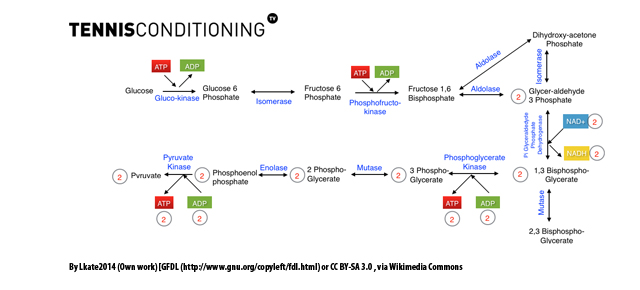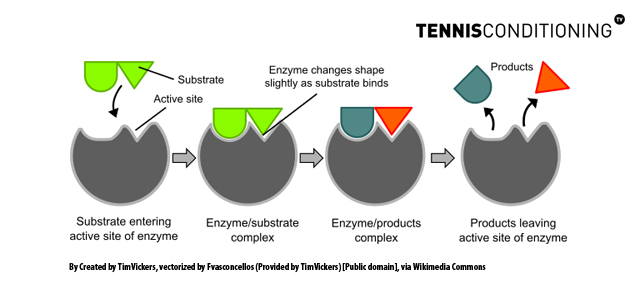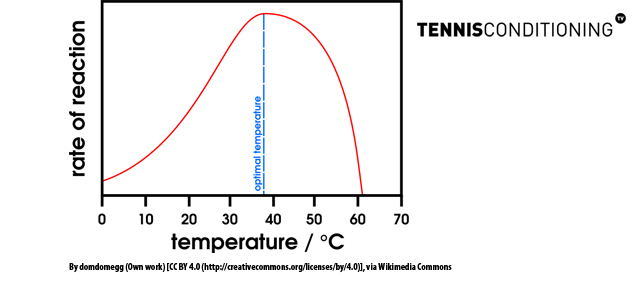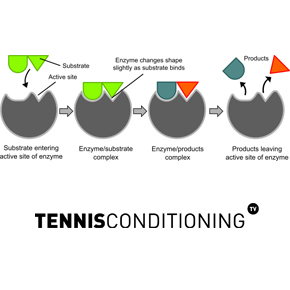Learn more about how enzymes and coenzymes do their job, responsibility of coenzymes and factors altering enzyme activity.

Talking Points
You will learn about:
- Functions of enzymes
- How enzymes do their job
- Functions of coenzymes
- Responsibility of coenzymes
- Factors altering enzyme activity
Enzymes

Enzymes have two functions, (1) they control the speed of cellular chemical reactions and (2) they control the metabolic pathways in cells. Enzymes do not cause a reaction but they control/regulate the speed at which the reactions occur.
Enzymes (which are proteins) regulate the speed of a chemical reaction by lowering the energy of activation, which is the initial energy required so that a reaction can actually occur; by lowering the initial energy of activation enzymes increase the rate of product formation.
When enzymes increase the speed of a chemical reaction in cells, then they are called catalysts. For an enzyme to work as a catalyst, the enzyme molecule must first bind to a reactant molecule, called substrate.
The enzyme (catalyst) molecule acts on the reactant molecule (substrate) to generate a product molecule, which is subsequently being released.
Theoretically, one enzyme molecule could generate multiple product molecules. In reality, enzymes act on two or more different substrates and generate more than one product.
Enzymes and Coenzymes
Only if a substrate molecule closely fits and binds to a particular site on the enzyme molecule, called the active site, can the enzyme act on the substrate and catalyze (accelerate) the reaction (Lock-and-Key model).
Coenzymes – FAD, NAD and CoA
Although enzymes are proteins, many enzymes possess other non-protein components called cofactors, which are necessary for the enzymes to function properly.
Other enzymes contain vitamins and this vitamin-derived cofactors function as coenzymes, which act as transport molecules to carry chemical components from one reaction to another so that enzymes can fulfill their functions.
There are three coenzymes that are important in energy metabolism:
- Flavin Adenine Dinucleotide (FAD)
- Nicotinamide Adenine Dinucleotide (NAD)
- Coenzyme A (CoA)
FAD and NAD participate as hydrogen (electron) carriers in certain oxidation-reduction reactions and they transport electrons from one place to another inside cells.
FAD acquires electrons by picking up pairs of hydrogen atoms (have 1 electron each), which then are brought and released to electron acceptors.
NAD picks up one electron in a hydrogen atom and the other electron comes as a free electron, which is “stolen” from another hydrogen atom. Only the free electron of a hydrogen atom is “stolen” and the rest remains as is (leaving a hydrogen ion solution).
Coenzyme A picks up chemical groups, called acetyl groups, in certain metabolic reactions and brings them to another reaction.
Factors Altering Enzyme Activity

Factors that alter enzyme activity are equivalent with the rate by which the enzymes’ substrate is converted into products.
There are two factors that influence enzyme activity:
- the temperature of the enzyme solution (products)
- pH (acidity level) level of the enzyme solution
Enzyme activity is best at body temperature (37˚C) or slightly above it. ATP production then increases during exercise because the speed at which reactions occur also increases due to enhanced enzyme activity.
Each enzyme has its own optimal pH level at which enzyme activity is most efficient.
During heavy exercise, skeletal muscles produce large quantities of lactic acid. Lactic acid is a strong acid which leads to a decrease in body pH levels (increase in acidity).
This decrease in body pH levels ultimately leads to a strong decrease in ATP production, which results in the cessation of work.
Related Article & Videos to Enzymes and Coenzymes
- The Importance of Aerobic Energy System Efficiency for On-Court Tennis Performance
- Aerobic ATP Production and Energy System Efficiency
- ATP-CP Energy System
Training Zone
In this section we provide you with some more workouts and training tips you may be interested in to optimize your training:




